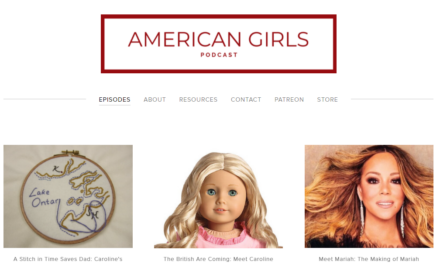There was a time, long ago, when writing on virtual walls, being “poked” by friends, and tagging pictures was entertainment enough to convert everyday internet surfers into Facebook users. But compared to today’s Facebook, on which people share videos, play games, check in at locations, and make virtual purchases, the original Facebook’s entertainment offering seems bare-bones.
According to Facebook statistics, users install 20 million apps every day. Playing games and streaming videos have become social activities. With more app support and more content sharing, Facebook, and social media in general, is increasingly becoming a multimedia entertainment platform-which seems to be the end goal for many of these sites.
“Becoming an app platform is a way to try and increase your sites’ stickiness as a destination,” says Marija Jaroslavskaja, senior analyst of broadband media at IHS’s Screen Digest. Facebook seems to stick pretty well for its 750 million-and-counting users. Google+, which added games soon after its debut on the social networking scene, is growing its userbase in record time, and Twitter supports both third-party and directly integrated photo and video sharing services.
Myspace, recently acquired by ad firm Specific Media, was on the multimedia bandwagon from the get-go, focusing its infrastructure around music artists and entertainment news. Its efforts seemed to be in vain, though, with its number of active U.S. users dwindling to 35 million in May 2011 — many of whom jumped ship years ago for the then lackluster Facebook.
Despite early losses to Facebook, it looks like Myspace is going to try its hand not only at distributing multimedia and socialization around entertainment but also at content creation. According to Specific Media, the company plans “to evolve Myspace into the premiere digital destination for original shows, video content and music.” The company also foresees hosting “socially-activated advertising campaigns,” which users can share with friends.
“As things stand at the moment, Myspace is unlikely to surpass Facebook traffic,” says Jaroslavskaja. But social media users like sharing their opinions and being entertained, so nothing about Myspace’s plan of action seems like a bad move. Leveraging the narcissism of social media users is the trick.
For many social media users, social networks are an access point for entertainment and thus are points of distribution for the brands, developers, television networks, or Hollywood studios providing the entertainment. “You have to look at social media as just simply another platform for getting traditional entertainment,” says Richard Hull, film producer, advisor to major studios, and contributor to Dancing With Digital Natives: Staying in Step With the Generation That’s Transforming the Way Business Is Done. A social network is just “a different sort of television set,” he says.
In fact, the youngest generation of adults is heading online for almost every form of content. According to the Pew Internet & American Life Project, 72% of American young adults age 30 and younger use social networking sites and 65% of young adults say they use the internet as their main source of news. Most American adults (71%) report that they watch videos on video-sharing sites, and this number increases to a whopping 92% when looking at young adults age 30 and younger. Social media platforms recognize that users do a lot of living online and are trying to become one-stop shops for users by expanding the content offered on the social media interface and by reaching to outside sites with plug-ins and integration.
Both Facebook and Google+ are trying to become as ubiquitous as possible to achieve this all-encompassing goal, says Jaroslavskaja, and “to become the social layer of the web at large.” Between the proliferation of the Like button and users’ ability to link their Facebook accounts with third-party sites, “rather than being a single destination, they are striving to follow their users wherever they go,” she says.
Change won’t happen that quickly for every party involved. Hull explains that Hollywood studios are hesitant to use social media as a distribution platform for blockbusters because of the platform’s uncertainty. “Culturally, [Hollywood] is very slow to change,” says Hull. In the 1970s, when the concept of home video via VHS tapes first came about, Hollywood studios went to court to fight VHS video distribution, Hull says, because they were worried that it would cannibalize the traditional business distribution model: movie theaters. Now, it’s hard to imagine the movie industry without thinking of DVDs and Blu-ray Discs.
Instead of renting out DVD versions of its movies, Warner Bros. Entertainment, Inc. was the first Hollywood studio to let Facebook users rent movies from the Facebook interface, starting in March with The Dark Knight. Paramount Pictures, Universal Studios, and Miramax followed suit this summer in a vote of confidence for social media movie distribution.
Hollywood studios may be wishy-washy about embracing social media as the next distribution platform for its content, but a strong audience via social media isn’t a guarantee either. Jaroslavskaja points out that users aren’t used to watching feature films through social networks because the levels of engagement are different. “We are talking about the ‘lean back’ experience of watching a movie on your living room TV (which is where consumers still want to watch movies and TV) versus the ‘lean forward’ experience of interacting on a social network,” she says.
For this reason, social media may be better suited for “media snacking” than for viewing premium entertainment content, says Jaroslavskaja. “Although social networks are serving up an increasing amount of video, the vast majority of this is user-generated content and short-form clips,” she says.
Another roadblock in the social-media-distribution business model lies in the Facebook=Free mindset. “Consumers are only prepared to pay for digital music, video, or books when this content can be consumed on devices other than a PC,” Jaroslavskaja says. Only in a few instances — one of the most successful examples of which is Zynga’s FarmVille — are people willing to pay for social entertainment.
Hull emphasizes that the most potential for social media lies in a new kind of user-created entertainment. Status updates, tweets, Likes, and posts are all a form of entertaining friends and followers that comes easily to Digital Natives. “The reality shows of trying to find love with a camera there-that doesn’t feel weird to people of this generation, so therefore it doesn’t feel weird to share stuff and entertain people with stuff that you’re sharing through social media,” says Hull.
“The digital natives are the entertainment,” he says, “and it’s your job as a brand through social media to give them the tools to actually be the entertainment themselves.”
Social media sites are competing to carry on the most engaging conversation with users. Still, no one knows exactly what comes next. One thing is fairly certain, though: It seems as though the social networks are intersecting with the media industry itself. The distinction between marketing and entertainment is disappearing, says Hull: “The lines totally don’t exist anymore.”
“That’s the great thing about social media,” he says. “It’s kind of the wild, wild West. We’re inventing stuff as we go.”






